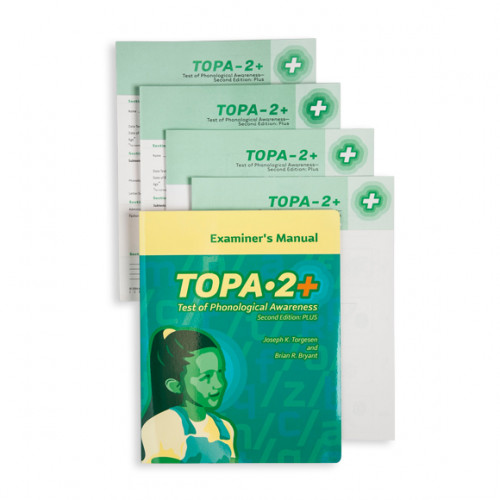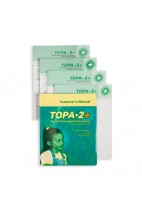Test of Phonological Awareness (TOPA-2+)
Complete Kit
- Ages 5 - 8 years
- Testing Time (Kindergarten) 30-45 minutes
- Testing Time (Early Elementary) 15-30 minutes
- Administration Individual / Group
-
Product Code 11880 ( MR #036815 )
* Qualifications required to purchase this item. Click here to complete the qualifications form.
Price $312.00
Contents
-
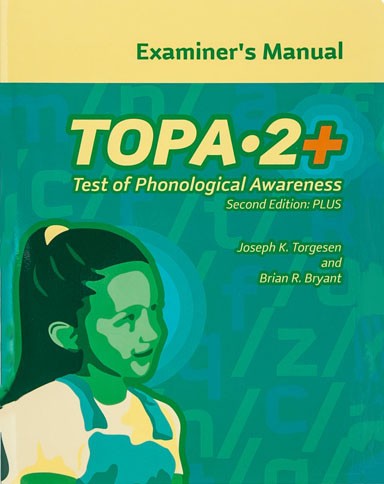
Test of Phonological Awareness (TOPA-2+)
TOPA-2+ Examiner's Manual
$110.00 -
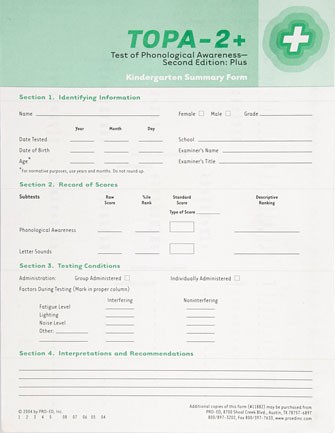
Test of Phonological Awareness (TOPA-2+)
TOPA-2+ Kindergarden Summary Forms (50)
$46.00 -
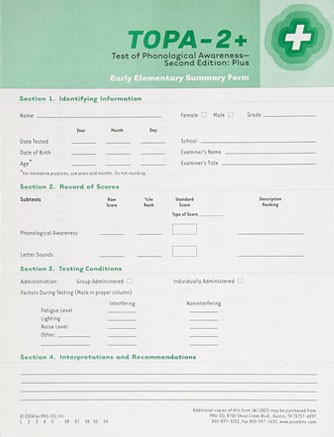
Test of Phonological Awareness (TOPA-2+)
TOPA-2+ Early Elementary Summary Forms (50)
$46.00 -
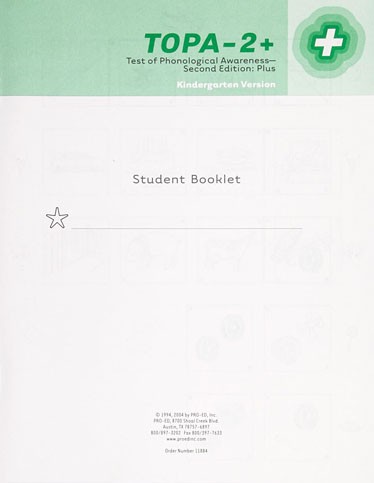
Test of Phonological Awareness (TOPA-2+)
TOPA-2+ Kindergarden Student Booklets (25)
$72.00 -
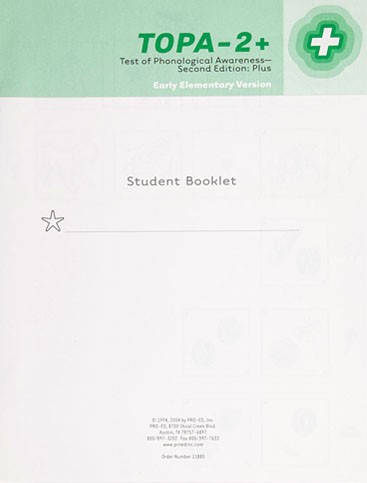
Test of Phonological Awareness (TOPA-2+)
TOPA-2+ Early Elementary Student Booklets (25)
$72.00
- All new normative data were collected during the years 2002 and 2003.
- Characteristics of the normative sample with regard to age, geographic region, gender, race, residence, Hispanic ethnicity, family income, and parents' education are keyed to the 2000 census data projections and therefore are representative of the current U.S. Population.
- The normative data for geographic region, gender, race, and residence have been stratified by age.
- Studies showing the absence of culture, gender, race, and disability bias have been added.
- Reliability coefficients have been computed by age and separately for males, females, Euro-Americans, African Americans, and Hispanic Americans, and those with language and learning disabilities, as well as for the entire normative group.
- All new validity studies have been conducted; these studies show clearly that the test results are valid for a wide variety of mainstream and minority subgroups, as well as for the general population.
- Some items from the original scale were changed to less offensive words and pictures.
- Letter-sound correspondence subtests were added to it which adds substantially to the predictive accuracy of early screening for reading difficulties.
- The overall look of the test has been updated and improved.
-

Test of Phonological Awareness (TOPA-2+)
TOPA-2+ Examiner's Manual
$110.00 -

Test of Phonological Awareness (TOPA-2+)
TOPA-2+ Kindergarden Student Booklets (25)
$72.00 -

Test of Phonological Awareness (TOPA-2+)
TOPA-2+ Kindergarden Summary Forms (50)
$46.00 -

Test of Phonological Awareness (TOPA-2+)
TOPA-2+ Early Elementary Student Booklets (25)
$72.00 -

Test of Phonological Awareness (TOPA-2+)
TOPA-2+ Early Elementary Summary Forms (50)
$46.00
- Copyright 2004

 Proud to be Canadian
Proud to be Canadian